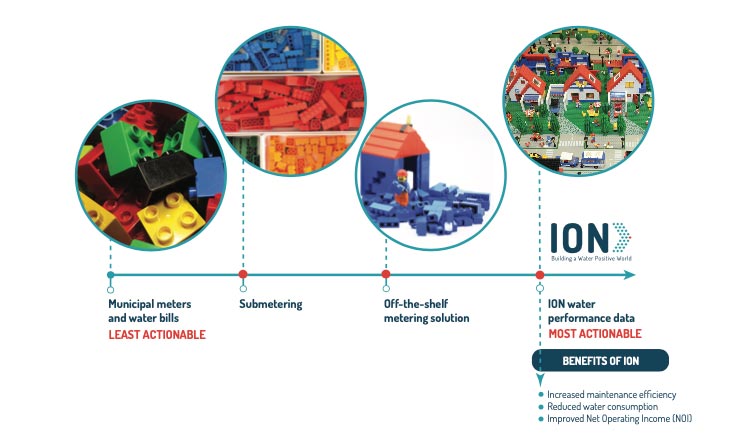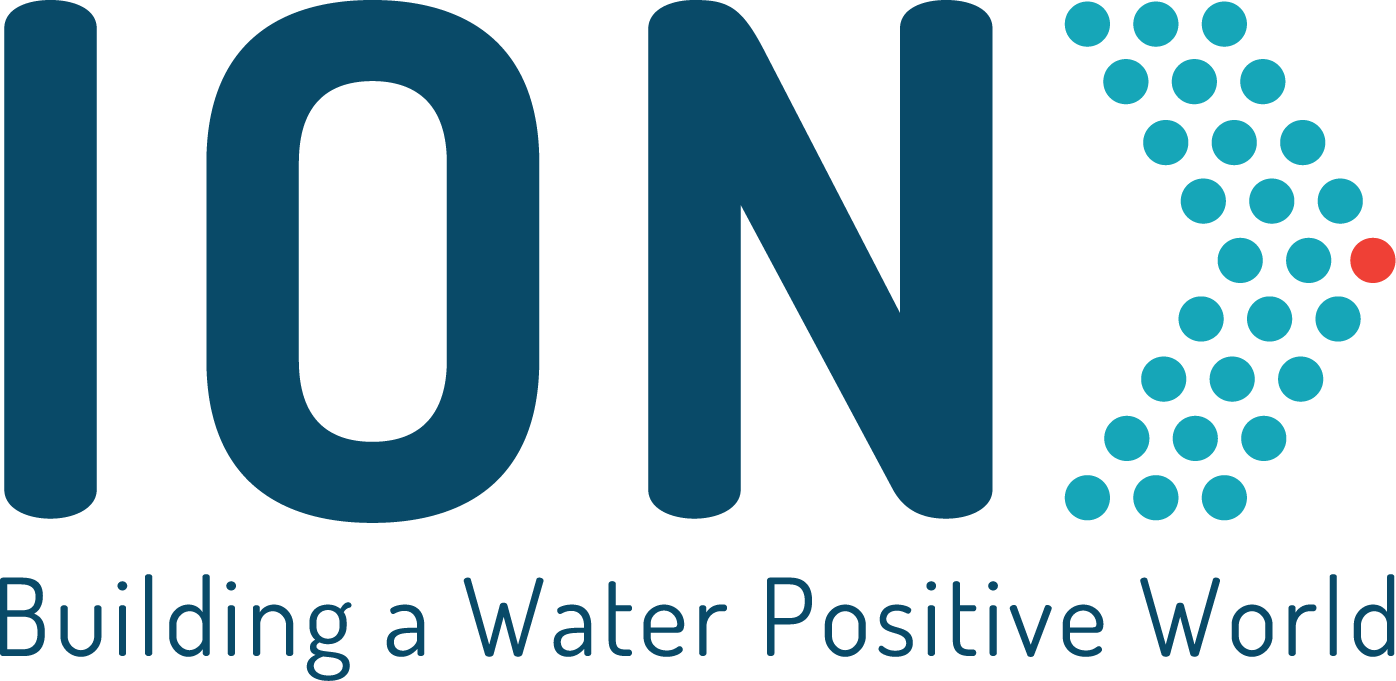Affordable housing is a crucial aspect of urban development, ensuring that individuals and families from diverse economic backgrounds have access to safe, comfortable, and reasonably priced housing. However, according to a recent report from the National Low Income Housing Coalition (NLIHC), no state has adequate affordable housing. In fact, there is a shortage of 7.3 million affordable and available rental homes for people with extremely low incomes in the U.S.1
As sustainable development has gained prominence, affordable housing developers are turning to innovative strategies to reduce their environmental footprint and save money that can be reinvested into their portfolios. While energy efficiency strategies have taken hold, water conservation remains elusive for developers. As there is no defined standard for water efficiency in affordable housing, many developers believe that consuming 100 gallons per bedroom per day or more is acceptable. It is not.

The perceived lack of actionable water data in affordable housing is the primary culprit for this misconception. The affordable housing industry wastes over 200B gallons of water and $3B annually. With actionable water data, consumption and costs could be reduced by as much as 70%, leading to dramatic increases in net operating income (NOI) and opportunities to reinvest into affordable housing portfolios. Fortunately, accessing actionable water data is a reality and many of America’s largest affordable housing developers are using water data to optimize the value of their portfolios while reducing their environmental footprints.

The Evolution of Water Data
As the world faces increasing challenges related to water scarcity and climate change, efficient water consumption has become paramount. The UN predicts a 40% shortfall in freshwater resources by 2030 while global demand for water is projected to increase by up to 25% by 2050.2 The need for sustainable water consumption is especially crucial in affordable housing, where the availability of resources directly impacts the quality of life for residents.
Over the years, the evolution of water data in affordable housing has undergone a transformative journey, moving from basic measurement efforts to the integration of advanced platforms that generate actionable water data. The industry is at an inflection point with more actionable water data available than ever before, yet many developers are still relying on legacy, outdated systems. These systems have evolved:
- Municipal meters (least actionable) – A municipal water meter measures the volume of water that is consumed by a property connected to a public water supply system. These meters are typically installed by municipal or local water authorities to accurately measure the amount of water consumed so customers can be billed accurately. Because municipal meters are installed for measurement and billing purposes, they do not offer actionable data for water conservation. Developers can only identify over consumption after receiving a large water bill.
- Submetering systems (less actionable) – A sub water metering system measures water consumption of individual units within a larger property. This allows for precise billing of each unit or sub-section of a property. Sub metering can encourage more efficient water consumption because affordable developers can identify units that are over consuming based on water bills. While this data is more actionable than a municipal meter, it is still received after a developer has already received a bill for a water event.
- Off-the-shelf-metering solutions (somewhat actionable) – An off-the-shelf water metering system is a ready-to-use system that provides the components for implementing water metering AND monitoring. In addition to water meters, off-the-shelf water metering solutions typically include some form of data collection and transmission equipment. This might involve wireless communication systems, data loggers, or IoT devices that transmit water usage data to a central monitoring system. This can help developers identify leaks and over consumption more quickly, but it won’t tell a developer exactly where a leak occurred and assign someone to fix it.
- Water optimization platform (most actionable) – Actionable water data allows affordable developers to drive informed actions and decisions. Most affordable multi-unit properties average over 100 gallons of water consumption per bedroom per day, which is the industry’s current underwriting assumption for water and sewer proformas. This is double what it should be. Affordable developers using a water optimization platform are consuming less than 50 gallons per bedroom per day. A water optimization platform provides real-time, actionable water performance data via smart sensors. It identifies and analyzes unit-level water events, pinpoints malfunctions and generates automated work orders so maintenance personnel can stop water loss before it impacts a property’s bottom line.

Increasing NOI with Actionable Water Data
Water costs are surging across the country due to drought conditions and deteriorating infrastructure plaguing our nation. In fact, water rates have increased about 50% over the last decade according to Bluefield Research.3
Access to actionable water performance data helps property developers reduce water consumption and costs by as much as 70%. The reduction in NOI, increasing property value and unlocking greater debt capacity for property improvements and other investments. Reducing water consumption also supports developers’ sustainability initiatives and provides a hedge against future rate hikes.
The Impact of Water Data on Sustainability
Global water resources are under pressure, and it’s getting worse due to the growing climate crisis. In fact, the UN predicts a 40% shortfall in freshwater resources by 2030.4 According to the EPA’s recent Smart Growth and Affordable Housing report, water-efficient development will become more important as climate change is projected to increase drought.5
In addition to reducing utility costs for affordable property developers, water conservation limits demand on water infrastructure. This is vitally important as freshwater resources are dwindling while population and demand for affordable housing is growing. Water efficient property development isn’t a nice to have, it’s essential. Fortunately, actionable water data can lead to improvements that reduce water consumption by as much as 70% and generate significant CO2e savings.
Water Data Enhances ESG Reporting
Water data can also be a valuable metric for affordable developers’ ESG programs. The Harvard Law School on Corporate Governance has water among its top 15 considerations that will influence ESG strategy in 2023. It says: “Water metrics will quickly become an incredibly close second to emissions-related disclosures.” They point to droughts and a lack of water stewardship efforts as primary causes and the critical importance of water on society.
Reliable water data can be used to demonstrate enhanced water efficiencies within your ESG program. These efficiencies translate to carbon offsets related to the reduced treatment and delivery of water. Additionally, millions in savings can be reinvested into social equity initiatives that enhance residents’ quality of life.
Affordable Developers Leading the Way, and Having an Impact
- Dominium Improves Property Value by $3M Using ION’s Water Optimization Platform
- ION helped Dominium’s Crossings at Cape Coral property reduce water expenses by $16,000 per month. ION reduced water consumption from 110 gallons per bedroom per day to less than 38 gallons.
- 10M Gallons Conserved
- $192,000 Annual Savings
- $3M Property Value increase
- Kittle Increases Property Sales Price by $2.8M Using ION’s Water Optimization Platform
- Kittle Property Group deployed ION’s water optimization platform at Bradford Gwinnett Apartments and Townhomes and was able to capture two months of stabilized water consumption data prior to selling the property. The brokers underwrote the platform which provided the data necessary to project a significant reduction in water consumption and costs. The expected reduced annual sewer and water costs increased NOI projections dramatically, resulting in a $2.8M increase in property value and sales price.
- 50 Gallons – Reduced consumption from 100+ gallons per bedroom per day to less than 50
- $2.8M increase in sales price
About ION’s Water Optimization Platform
We envision a more sustainable affordable housing market, where both affordable developers and communities can thrive through improved water efficiency. Our water optimization platform changes the game for affordable developers allowing them to harness real-time water data to reduce water consumption and costs by as much as 70 percent compared to industry averages.
Our water optimization platform generates data that is 20,000 times more granular than a typical billing meter. This enables us to identify leaks efficiently and accurately and generate automated work orders that allow maintenance teams to act swiftly. Because of this efficiency, ION’s customers are maintaining water consumption below 45 gallons per bedroom per day.

ION is committed to “Building a Water Positive World.” A world where businesses, policy makers and communities work together to preserve and replenish our most precious resource, water. The first step towards being water positive is eliminating waste, and our platform helps affordable developers reduce water waste by as much as 70%.
Conclusion
Affordable housing developers play a pivotal role in fostering sustainable, cost-effective communities. By leveraging actionable water data to optimize water consumption, developers can make informed decisions that not only enhance their NOI but also contribute positively to environmental conservation efforts. As the world grapples with water scarcity and rising utility costs, the adoption of data-driven strategies becomes an imperative step toward creating thriving, efficient, and eco-friendly affordable housing communities.
1. https://nlihc.org/gap
2. https://www.forbes.com/sites/jamiehailstone/2023/08/21/why-more-and-more-companies-are-setting-water-sustainability-goals/?sh=59db41e461c8
3. https://www.nytimes.com/2023/07/14/your-money/water-bills-tips.html
4. https://gritdaily.com/companies-becoming-more-water-positive/
5. https://www.epa.gov/smartgrowth/smart-growth-and-affordable-housing
6. https://corpgov.law.harvard.edu/2022/12/31/the-top-15-anticipated-esg-related-considerations-that-will-influence-strategy-in-2023/
